Writing Teaching Resources
Teaching writing strategies and the writing process this school year? Explore a comprehensive collection of teacher resources for primary English teachers — all created by teachers!
Stocked with graphic organisers, writing prompts, templates, worksheets and so much more, this collection of printable and digital activities is designed to help you as you help your students become more effective communicators and unleash their creativity and imagination.
Save time on lesson planning with resources that are aligned with the Australian curriculum (including version 9!) and have been through a careful review process by an expert member of our teacher team to ensure they're ready for your classroom and your students!
Are you looking for tips and tricks to add to your teacher toolkit this school year? Read on for a primer from our teacher team, including engaging activities for teaching writing inprimary school and a look at some of the different writing strategies your students will need to learn.
11 Writing Strategies Kids Should Know by the End of Primary School
We can't talk about teaching kids to write without talking about the different writing strategies that can help them do just that!
When it comes to teaching our students to become confident writers who articulate their ideas effectively, here are some of the strategies our teacher team prioritises:
1. Brainstorming
Brainstorming is something we often do in the classroom, and it's a crucial part of learning to generate the ideas that will drive students' writing as they progress through their educational journey. Kids should know how to create a list of potential topics or points related to a particular writing assignment.
With younger students, this is often done as a whole group by writing ideas and points on chart paper. In upper years, students transition over to using text-based materials to generate ideas and talking points.
2. Outlining
Before diving directly into any assignment, our students should be able to create a structured framework or outline. Teaching students how to create this outline will help them organise their thoughts and arguments for penning their essays, reports and research papers.

3. Using Graphic Organisers
Technically graphic organisers are classroom tools, so you may not think of their use as a writing strategy per se. However, learning to use these tools is another means of providing kids with the tools they need to organize their ideas and information before they sit down to write.
These organisers are particularly useful for expository writing — students can use them to outline main ideas, supporting details, and transitions.
Students can also take advantage of story maps when they are working on narrative writing to plot the key elements of a story, such as characters, setting, conflict, rising action, climax and resolution.
Graphic organisers such as the OREO strategy and hamburger paragraph are also great tools for students to use when working with opinion and persuasive texts.
4. Freewriting
Writer's block is the enemy of creativity, and it can easily frustrate young students who don't know where to begin.
When students freewrite, they write continuously without worrying about grammar or punctuation. This writing strategy can be extremely freeing — hence the name! — and helps frustrated writers move past that writer's block, generating fresh ideas.

5. Peer Editing
Learning to review and provide constructive feedback on each other's work is a great writing strategy to employ in your classroom to help students improve their writing quality and enhance their editing skills.
The strategy allows your students to learn from one another, and it arms them with an important tool they can use well into the future — calling on peers to provide a critical eye to a piece of writing.
6. Using Sensory Language
Working on descriptive writing? With this writing strategy, students engage the reader's senses through vivid and sensory language to create a more immersive experience.
7. Including Transitions and Connectives
As students become more proficient in the writing process, learning to use transitional words and phrases allows them to create smooth transitions between sentences and paragraphs. This strategy makes their writing more coherent and polished.
8. Incorporating Evidence
In persuasive, opinion and expository writing, students are taught to support their claims with evidence and examples to strengthen their arguments.
It takes some practice to train your students to use evidence in their writing, so it's often a good idea to start with something simple, like the R.A.C.E.S. strategy.
9. Crafting a Thesis Statement
In expository, opinion and persuasive writing, crafting clear and concise thesis statements that summarise the main point or argument of their essay helps students be more focused and organised in their writing.
This strategy can also have the effect of empowering students to express their ideas confidently and persuasively.
10. Incorporating Introductions and Conclusions
With this strategy, students practice crafting effective introductions and conclusions that grab the reader's attention and leave a lasting impression.
11. Following a Revision Checklist
Teaching your students to use a revision checklist is a strategy that will help them be more self-reflective, evaluating their own writing against the checklist criteria and becoming more aware of their strengths and weaknesses.

- Plus Plan
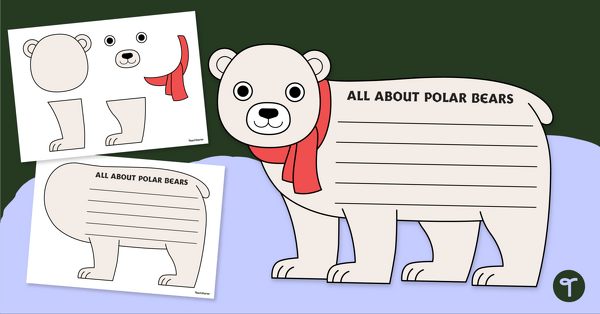
Polar Bear Craft Template
Pair a polar bear craft and informational writing to create a fun winter animals classroom display.
- Plus Plan
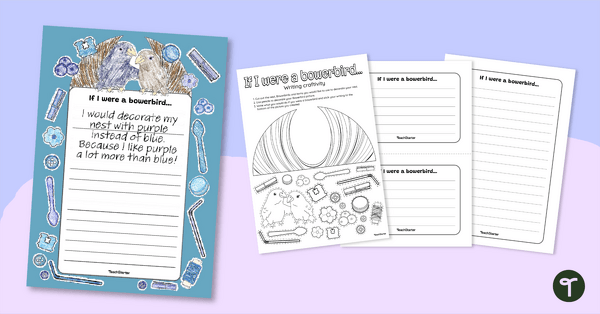
'If I Were a Bowerbird...' Writing Stimulus
Get students thinking and writing about what they would collect, or what they would do if they were a bowerbird.
- Free Plan
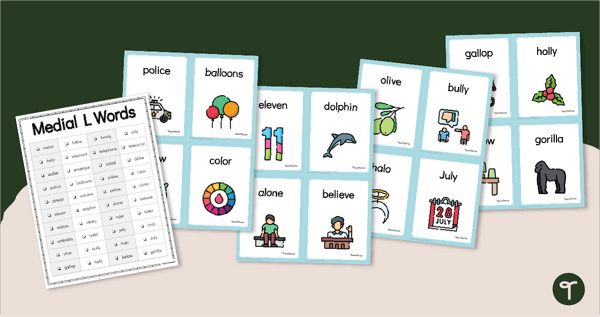
Medial L Words - List & Flashcards
Practise reading and articulating Medial L words with a list of 40 words and accompanying illustrated flash cards.
- Plus Plan
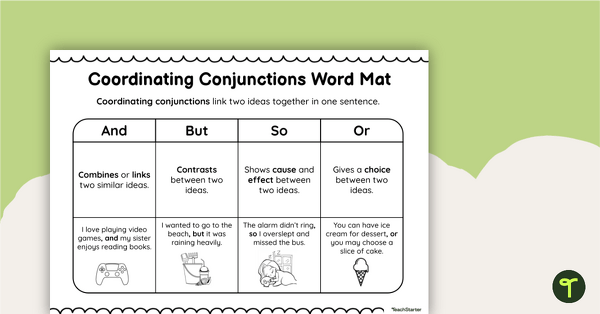
Coordinating Conjunction Word Mat
Boost your students’ writing skills by giving them access to this coordinating conjunctions word mat during literacy lessons.
- Plus Plan
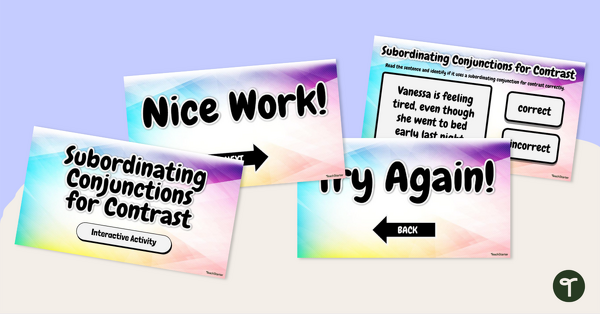
Subordinating Conjunctions for Contrast Interactive Activity
Assign this multiple choice subordinating conjunctions for contrast interactive activity for your students to correctly identify this type of conjunction in given sentences.
- Plus Plan
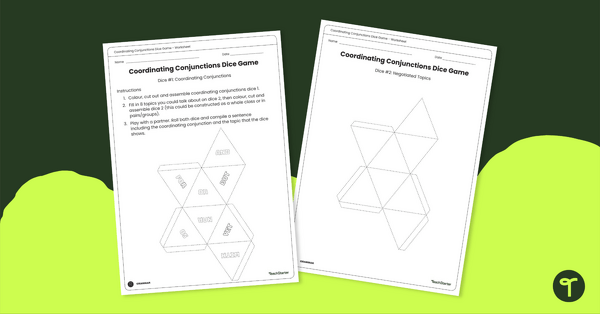
Coordinating Conjunctions Dice Game
Use this hands on activity for students to create two 8 sided-dice and write compound sentences using coordinating conjunctions.
- Plus Plan
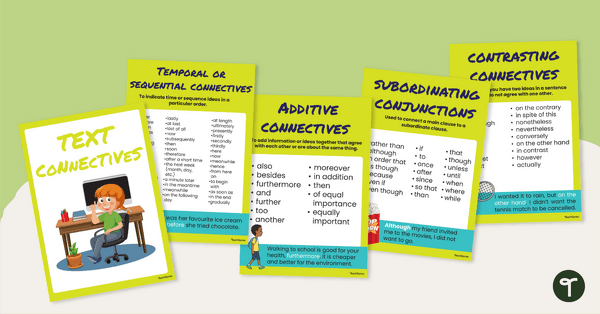
Text Connectives Posters for Upper Primary Students
Display this set of 8 grammar posters to remind students the types and examples of sentence connectives and conjunctions.
- Plus Plan

Text Connectives Posters for Lower Primary Students
Display this set of 8 grammar posters to teach students about text connectives and conjunctions.
- Plus Plan
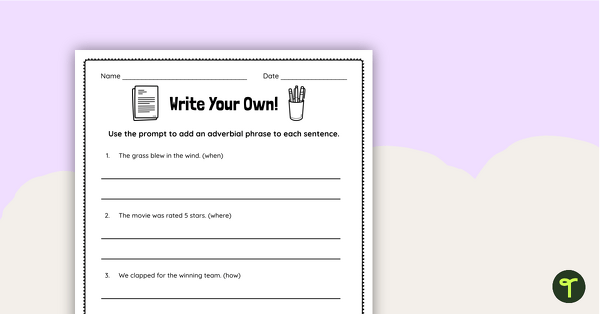
Write Your Own Adverbial Phrases Worksheet
Use this set of differentiated adverbs worksheets to assess students’ ability to add adverb groups into simple sentences.
- Plus Plan
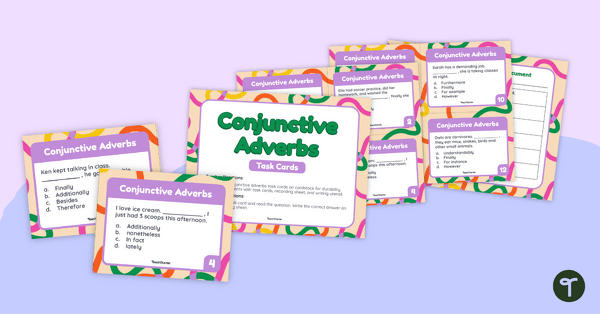
Conjunctive Adverbs Task Cards
Assess your students’ understanding of conjunctive adverbs with these fun adverbs task cards!
- Plus Plan
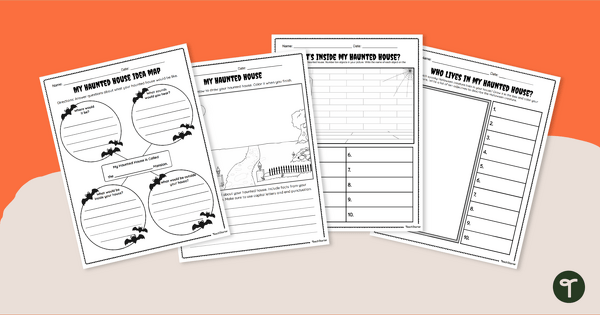
Haunted House Worksheets - Descriptive Writing Activity
Draw and write about scary Halloween houses with a printable Halloween descriptive writing activity pack.
- Plus Plan
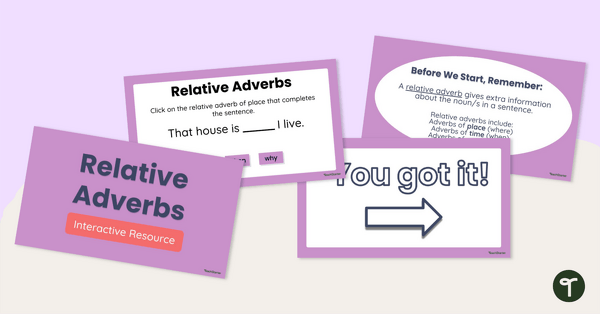
Relative Adverbs Interactive Activity
Use this relative adverbs interactive activity as a warm up for your grammar lesson or to refresh students’ memories before a writing session!
- Plus Plan
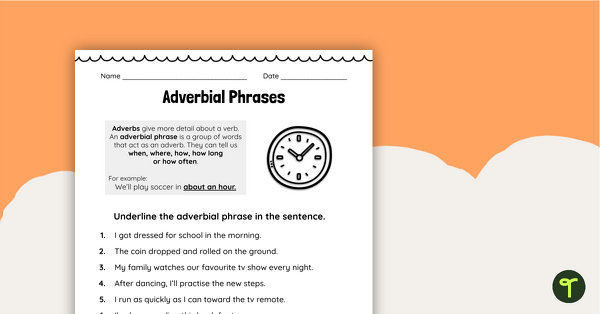
Find the Adverbial Phrases Worksheet
Use this simple yet effective adverbs worksheet to assess students’ ability to identify adverb groups (adverbial phrases) in sentences.
- Plus Plan
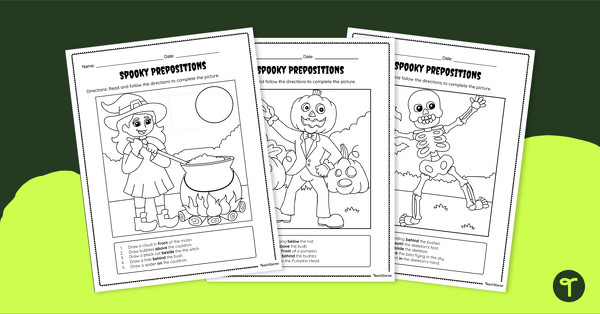
Halloween Finish the Drawing - Preposition Worksheets
Finish the drawing to create a fun Halloween scene with a set of preposition worksheets.
- Plus Plan

Comparative and Superlative Adverb Task Cards
Introduce these comparative and superlative adverbs task cards to your class to grow their understanding of these types of adverbs!
- Plus Plan
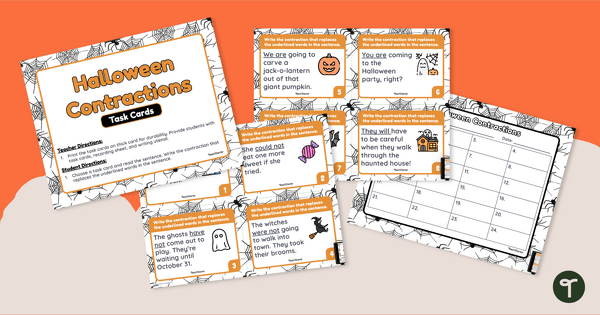
Halloween Contractions Activity - SCOOT! Card Game
Identify contractions and the words they replace with a printable Halloween Contractions Activity for Year 2.
- Free Plan
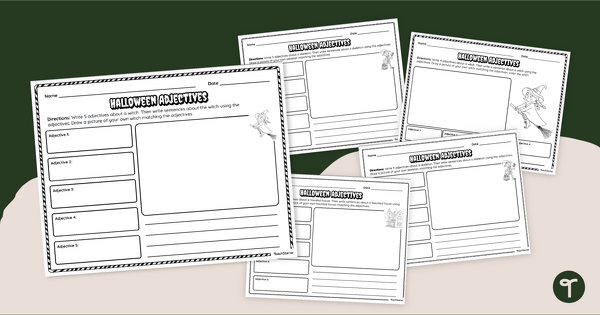
Halloween Printables - Spooky Halloween Adjectives Worksheets
Bewitch your students into using descriptive adjectives with printable Halloween adjectives worksheets for Year 1 and Year 2 students.
- Plus Plan
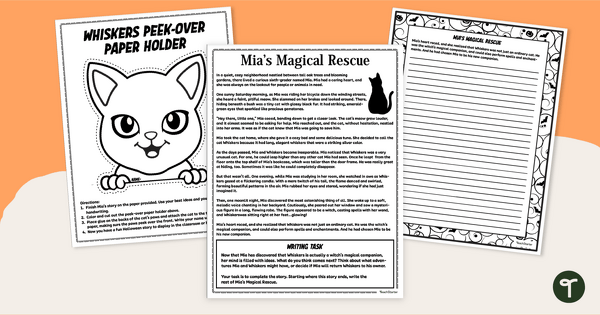
Halloween Narrative Writing Prompts — Finish the Story Writing Activity
Use this printable 'Finish the Story' writing prompt and craft to develop narrative writing skills this Halloween season.
- Plus Plan
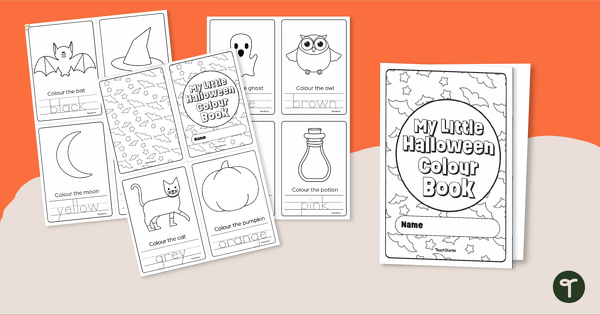
My Little Halloween Colour Book
Brighten your Halloween lesson plans with a printable Halloween colour book for foundation and year 1.
- Plus Plan
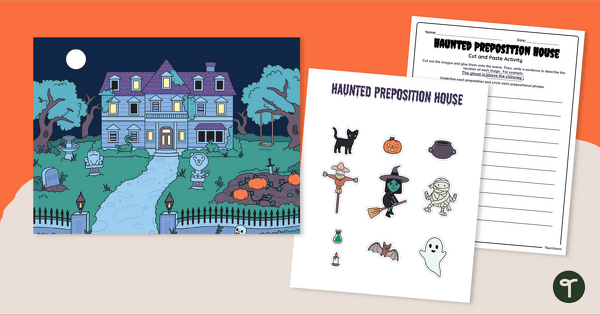
Haunted Preposition House - Halloween Worksheet
Practise using prepositions and prepositional phrases with a a fun and spooky Halloween worksheet!
- Plus Plan
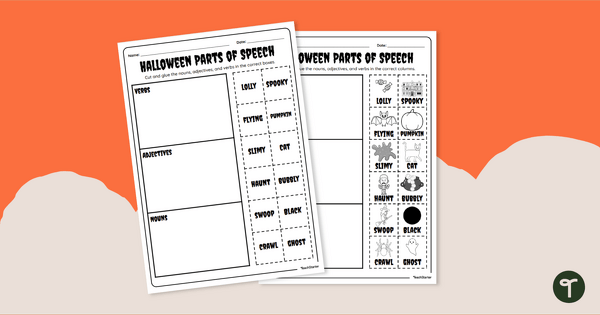
Halloween Parts of Speech - Cut and Paste Worksheet
Have a bit of spooky fun sorting Halloween nouns, verbs, and adjectives with a cut and paste worksheet.
- Plus Plan
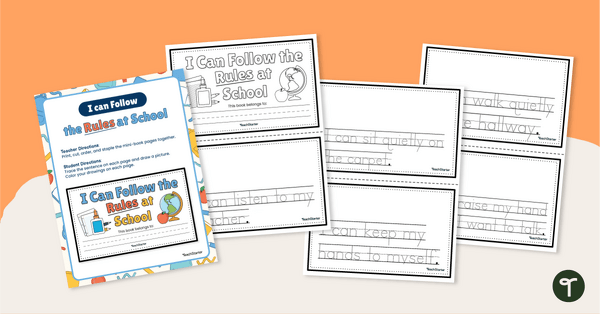
I Can Follow the Rules at School – Mini-Book
Use this mini-book to review or introduce school and classroom rules to your primary students.
- Plus Plan
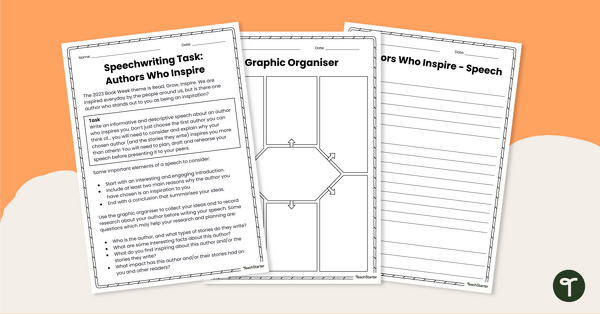
Authors Who Inspire – Speechwriting Task
Research and celebrate an inspiring author with this speechwriting activity.
- Plus Plan
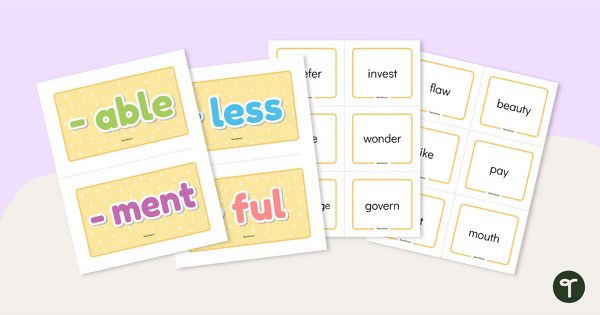
Words with Suffixes - Word Building Activity
Build words by matching the root word to suffixes and recording the new words on the answer sheet.
- Plus Plan
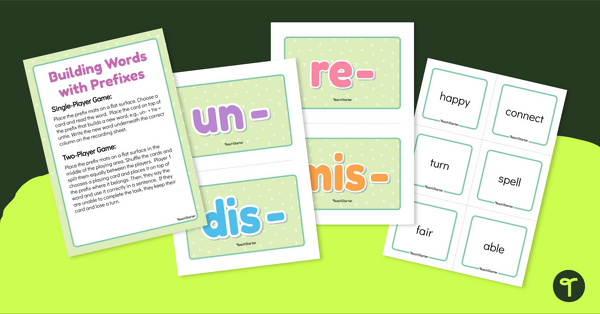
Building Words with Prefixes Sorting Activity
Build words by matching the root word to prefixes and recording the new terms on the answer sheet.
- Plus Plan

Objects in the Sky – Writing Prompts
Describe objects in the sky, such as the clouds, moon and sun, with this set of 8 space science writing prompts.
- Free Plan
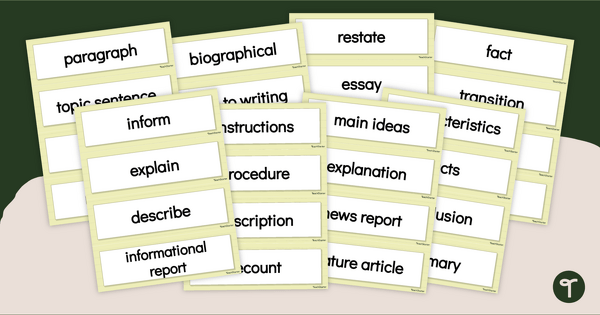
Informative Writing Word Wall
Display key vocabulary related to informative writing with a set of 48 word wall cards.
- Plus Plan
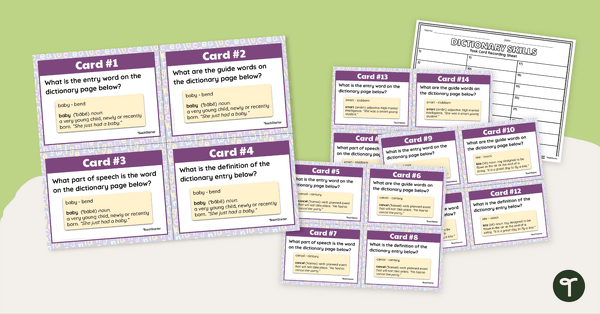
Dictionary Skills Task Cards - Set 2
Practise dictionary skills with this set of task cards.
- Free Plan
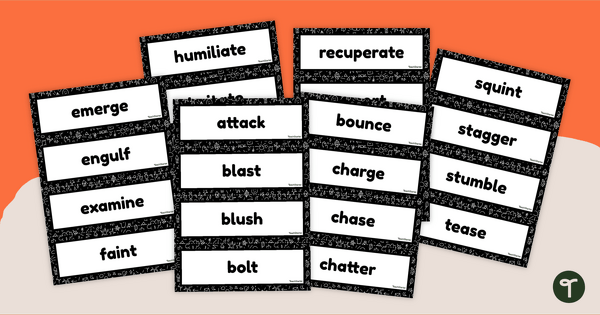
Strong Verbs Word Wall
Print a set of strong verbs word wall cards to help your students boost their writing skills!
- Plus Plan
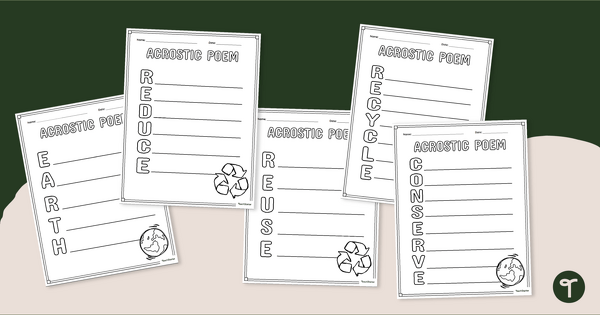
Earth Day - Acrostic Poem Template Pack
An acrostic poem template to use in the classroom to celebrate Earth Day and National Poetry Month.
- Plus Plan
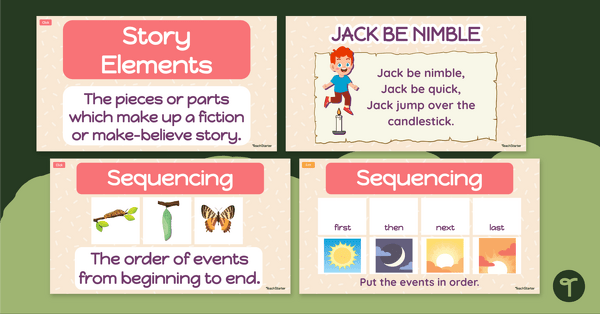
Narrative Sequencing Teaching Presentation - Jack Be Nimble
Engage young readers in texts and learn about narrative sequencing with an instructional slide deck featuring the Jack Be Nimble nursery rhyme.
- Plus Plan
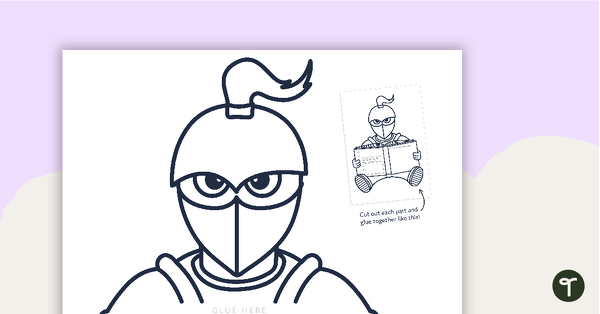
Knight Book Report Template
A book report template fit for a... knight!
- Writing Worksheets
- Writing Templates
- Writing Games
- Writing Posters
- Writing Teaching Presentations
- Writing Labels, Signs & Decorations
- Writing Word Walls
- Writing Projects
- Writing for Preschool/Kindergarten
- Writing for Foundation Year
- Writing for Year 1
- Writing for Year 2
- Writing for Year 3
- Writing for Year 4
- Writing for Year 5
- Writing for Year 6
- Writing for Year 7